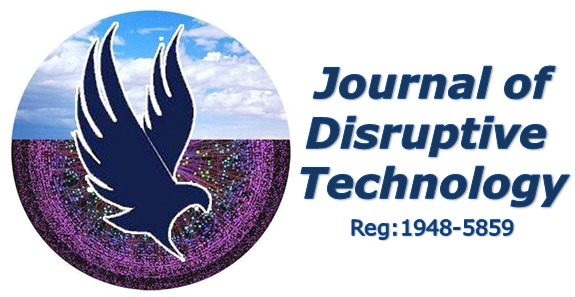Volume 13, Issue 1
Phenomenon of Leadership Failure: An Exploration to Determine the Significance of Moral Action for a Sustainable Leadership ~Kenneth-Maxwell Nance
Abstract:
The cost of leadership failure is enormous when lives and livelihoods are at risk, contributing to the loss of blood, treasure, and right living of people globally (e.g., war-related deaths and expenditures, scandals, racism, and other harms to people). Observing the leadership failure phenomenon in gradual categorical forms of degradation, harm, failing, and failure compelled this exploratory-sequential mixed methods study for sustainability. Despite advancements in facts, with billions spent, leadership fails; public confidence decreased as development costs increased. An unsatisfied grand theory quest for decades remained. Scholars expressed disappointment with the state of research, popular approaches, diverged interests, mounting definitions, and reductionism. Observed failures, an abductive inference, questions, holding pragmatism as a philosophical orientation led to finding the best means of uncovering understanding. An exploration sought to understand what the unimportance or importance of moral action is, and leadership’s sustainability in its absence. A theory emerged during theoretical sampling and constant comparative analysis of interviews from six continents, giving rise to the aphorism “leadership in the absence of moral action is unsustainable.” A longitudinal literature exploration across 3,000 years ensued after theory emergence, supported qualitative findings of a classical grounded theory approach. Random sampling from 2,523 global cases, analyzing 2,191 cases in a quantitative phase, showed statistically significant association between unethical leadership action (ULA) and unsustainable leadership outcomes (ULO), χ 2 (1, N = 2,191) = 119.643, p < .001. There was relatively strong association between ULA and ULO, φ = .436, p < .001. Scientific methods, empirical and statistical evidence indicated unethical leadership action was associated with failure of otherwise effective leadership in 98 percent of the analyzed cases. Thus, establishing the importance of moral action, unsustainability in its absence, advancing leadership inquiry with a tested grand theory for leadership’s sustainability, positive disruption, and human progress.
Re-published in this special Edition
The Influence of Organizational Culture on the Adoption of ICT Innovation following Technological Disruption: Evidence from Kenyan ICT SMEs (Volume 7, Issue 2, May 2018)
Authors: Francis G. Kagumba1, Dr. Agnes N. Wausi2
1 University of Nairobi, Nairobi, 30197 – 00100, Kenya
2 University of Nairobi, Nairobi, 30197 – 00100, Kenya
1kagumba@uonbi.ac.ke
2wausi@uonbi.ac.ke
Abstract— Disruptive ICT technologies such as artificial intelligence and mobile computing are transforming how SMEs communicate, connect and discover. However, the challenge in adopting such technological innovation lies in the evolution of employee behaviour, values and expectations towards enabling them to work in the enterprises. In this study, it is aimed to understand the influence of organizational culture on employee behaviour towards the adoption of ICT innovation. A survey of 83 managers and 43 employees from 126 ICT SMEs is conducted. The findings of the research revealed that high adoption rates were observed in organizations that fostered adhocracy cultures where informal work relationships existed among managers and employees and in organisations that emphasized on innovating their processes of meeting customer needs.
Mark van Rijmenam
University of Technology, Sydney
Re-published in this new edition:
A case study of deft leadership collaborative use of analytics
Abstract: Examined in this paper was how the seamless synergies and collaborative work of deft leaders, data analysts (DA), data scientists (DS) and information analysts (IA) used analytics to glean important data from the big datasets for profit. Various archetypes of deft leadership styles from previous chapters were used to illustrate this phenomenon: a) bad or dysfunctional, b) collective, c) situational, d) transformational, e) transactional, f) trait approach to deft leadership. Question for learners: what would be the consequences of deft leaders in organizations not adroitly and radically changing and adapting to the newly evolving internet platforms? Embedded within these platforms were the internet of things (IoT) and the industrial internet of things (IIoT). Vignettes were used to explain why deft leaders should form teams of managers of DA, DS and IA to adopt these newly platforms due to the ever changing technological business environments and pathways. Explained within the contemporary realm of thought of the data scientists, statistical models were examined and how it inextricably intertwined with the organizational profit.
The computational cost, high dimensionality, incidental endogeneity, noise accumulation and spurious correlation were linked to profit with the collaborativeness of the DA, DS and IA. The findings revealed that without the managerial teams of DA, DS and IA collaborating and reporting pertinent gleaned data analysis from big data to the deft leaders within actionable real-time, the trajectory showed that the business will cease to exist. The recommendation was for deft leaders to quickly adjust with dexterity to the ever changing technological pathways based on the brutal reality within the global terrain.
Abstract:
This paper examines how the seamless synergies and collaborative work of deft leaders, data analysts(DAs), data scientists(DS) and information analysts(IAs) used analysis gleaned from big datasets to maximize organizational profit. Various deft leadership styles used to illustrate this phenomenon: a) bad or dysfunctional, b) collective, c) situational, d) transformational, e) transactional, f) trait approach to deft leadership. The core research problem was deft leaders in organizations’ inability to embrace radical changes within newly formed internet platforms. Embedded in this study were the internet of things (IoT) and the industrial internet of things (IIoT). Vignettes used to explain why deft leaders should form teams of managers of DAs, DS, and IAs to formulate new platforms to respond to the ever-changing technological business environment. Within the contemporary realm of data scientists, statistical models inextricably intertwined with the organizational profit. The computational cost, high dimensionality, incidental endogeneity, noise accumulation and spurious correlation linked to profit with the collaborativeness of the DA, DS, and IAs. The findings revealed that without the managerial teams of DA, DS, and IAs collaborating and reporting pertinent gleaned data analysis from big data to the deft leaders within actionable real-time, the trajectory showed that the business will cease to exist. The recommendation was for deft leaders to adjust with dexterity to the ever-changing technological pathways based on the situations within the global terrain.
Authors: Dr. Ossian Garraway, D.B.A
Aluya institute of global mindset, California, USA
Aluyainstitute.com
Authors: Dr. Joseph Aluya, D.B.A. & Dr. Ossian L. Garraway, PhD, D.B.A. Title: Biofuels has become disruptive technology to the global energy market.”
Abstract:
Abstract: In this study, the research showed that the success of a disruptive energy technology like Biofuels depended on: (a) the politics and the leadership of the industry as related to the disruptive energy technology; (b) minimizing the social and ecological disruption associated with the disruptive energy technology; (c) a decline in the fossil fuel’s supply; (d) an increased in the global demand for energy; (e) the sustainability of the disruptive energy source; (f) creative destruction enhances the Biofuel industry; (g) using the disruptive energy technology to create assessable opportunities; and (h) potential nominal investment risks to investors. This paper concludes that even though the focus of a sustainable fuel source like Biofuel was to increase local employment while increasing sales in the production of related products, it should be noted that the multiple geographies and technologies surrounding the production of a sustainable fuel resource increased risk to the investors.
Volume: 9 Issue: 4
Authors: Dr. Joseph Aluya, D.B.A. & Dr. Ossian L. Garraway, PhD, D.B.A.
Abstract:
Leadership styles and political considerations are inextricably intertwined with any transition from hydro-power, to solar and wind disruptive technologies. This study explains without understanding and deploying various leadership styles to cognitively and effectively implement solar and wind as alternative energy, no superior alchemy will lead to full implementation of solar and wind from proposal to fruition. Even when all leadership styles are deployed, political consideration becomes the vital axis for the transition juxtaposed within the various leadership styles. Authoritarian, collective, situational, transactional, and transformational leadership styles are elucidated to expansively explain this phenomenon. From developing nations using hydro-power source of energy that have resulted in consistent epileptic brownouts to rural areas in developed nations, strategic leadership planning horizons have been reduced to tactical managers time frame. Visionary strategic leaders planning of three to five years are reduced to three to six months due to situational technological happenstances. Situational leadership styles are trumping other type of leadership styles due to interconnections, interdependence, and economic uncertainties in the energy sector. A global mind-shift is now adopted in reduction of time frame when implementing solar and wind as an alternative energy.
Volume: 8 Issue: 2
Authors: Dr. Joseph Aluya, D.B.A.
Abstract:
Abstract: Core to this research is why did Microsoft acquire Nokia? Most significantly in this study, the question is whether or not Stephen Elop will be the CEO of the new Microsoft? Delphically, the scholarship critical question for learners was what happened to Nokia concatenations of past-historical antecedents? Perplexing, why did Nokia refused to transfix its creative innovativeness by using its capitalized deep creative destruction mechanization to reaching its optimum operational capacity before an Icarus fall like, the likes of Ericson and Motorola?
Volume: 7 Issue: 1
Authors: Dr. Joseph Aluya, D.B.A.[
Abstract:
The core analysis of this paper is how does the market tectonically shift in favor of Apple as the disrupter? With the introduction of iPhone 5S, iPhone 5C and iPhone 8 to the market, the market again is shifted to Apple’s favor. Over nine million (9 million) of these iPhones powered by IOS was sold in three days. This was a record profit more than of $5.56 billion US dollars. Thus, bring to fore the question of what are the historical makeup of Apple leadership and their individualistic styles? How is the leadership style of Timothy D. Cook defined? How creative innovation and creative destruction applied to Apple Corporation
Volume: 6 Issue: 2
Authors: Dr. Joseph Aluya, D.B.A.[]Abstract:
The pertinent question was how does HP culture enhanced leadership styles within an organization? What did leadership and learners deduced from the colossal debacle of HP/Compaq merger. In this research and findings what was the HP-Way and what were the glue technologies?
Volume: 5 Issue: 4
Authors: Dr. Joseph Aluya, D.B.A.[
Abstract:
The core of this research analysis is how Apple uses a large volume of datasets to predict its future trends. These large datasets incrementally and radically change how the company tailors newly innovative products to the end users. This paper also took a bird’s eye view on the deft historical leadership style within the company and why the company will continue to innovative to avoid the Icarus fall like Nokia and other similar technology companies.
Volume: 4 Issue: 4
Authors: Dr. Joseph Aluya, D.B.A.
Abstract:
The Core to this research is why did Microsoft acquire Nokia? Most significantly in this study, the question is whether or not Stephen Elop will be the CEO of the new Microsoft? Delphically, the scholarship critical question for learners was what happened to Nokia concatenations of past historical antecedents? Perplexing, why did Nokia refuse to transfix its creative innovativeness by using its capitalized deep creative destruction mechanization to reaching its optimum operational capacity before an Icarus fall like the likes of Ericson and Motorola?
Volume: 7 Issue: 1
Authors: Dr. Joseph Aluya, D.B.A.
Abstract:
Abstract: Significantly, the research question was why did Microsoft offer to acquire Yahoo for $40.8 billion? And why are other companies envious of Yahoo fragmentation and continuous innovation through the use of TSHs, SWOT, PESTEL and other business modular changes? How were TSHs, SWOT, and PESTEL ensconced in Yahoo paradigmatical deft leadership style?
Volume: 7 Issue: 2
Authors: Dr. Joseph Aluya, D.B.A.The Special Edition Submissions to the Vol. 7, No. 4, April 30, 2018 issue. The submission deadline – March 30, 2018[/vc_cta][/vc_column_inner][/vc_row_inner][/vc_column][/vc_row]

